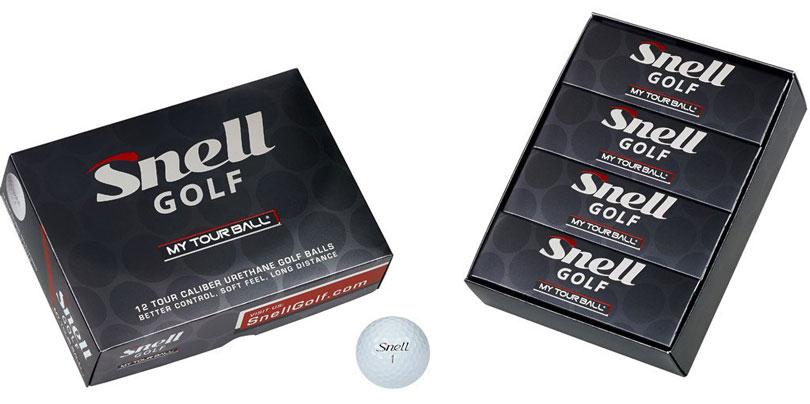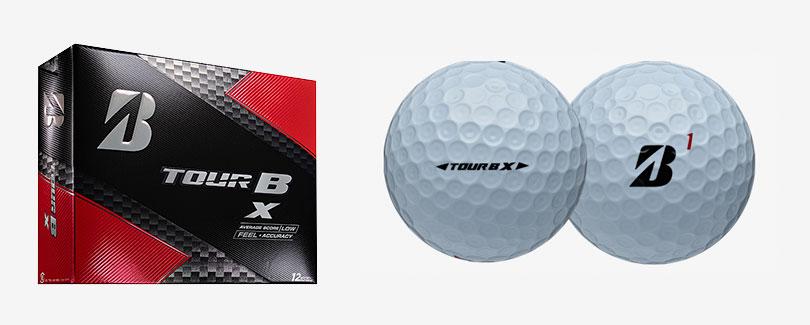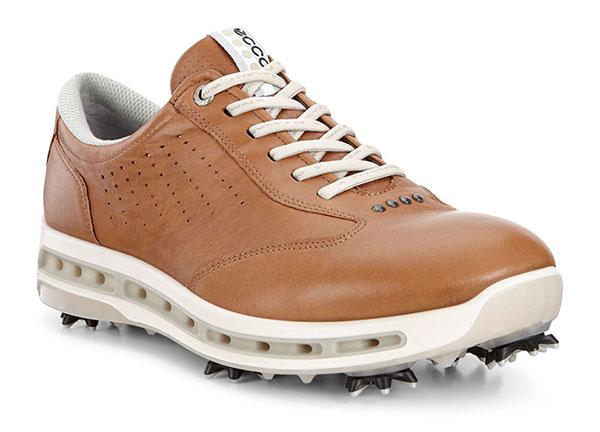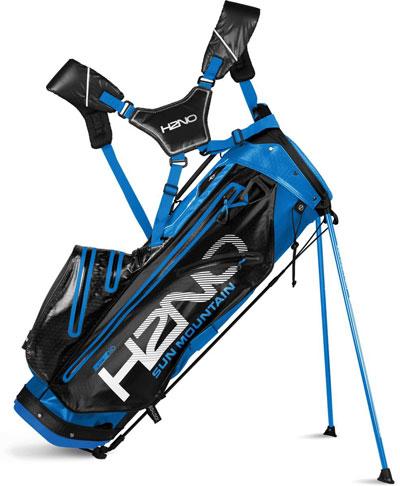For these international golf jaunts you've got to prepare, especially with clothing and equipment. Here are a few items that make my annual trip to Ireland go a bit more smoothly.
Before this trip, I had never used a shipping service to deliver my golf clubs ahead of my arrival. I certainly thought about it every time my clubs were delayed, my travel bag damaged or my life made miserable by the airport schlepping.
But with airline baggage fees to Europe reaching $200 or more roundtrip for most golf bags, I was ready to find an alternative. Luggage Forward, a Boston-based outfit started in 2004, has acquired seven smaller competitors in that time, and came recommended by an Irish golfer.
They picked up my clubs in San Antonio a full five days before my flight to Dublin, which seemed a bit much – I badly needed to practice with them – but that's why they guarantee on-time deliveries or they refund your money, plus $500. Two to four days is normal.
As promised, I was emailed about every pick-up and delivery all along the way. My clubs were like children off at summer camp. They were waiting for me at my Dublin hotel, got picked up nicely when the trip was over and safely beat me home to Texas without a scratch, with prices starting around $433, depending on the itinerary, of course.
For me, it was a simple matter of subtracting the American Airlines standard charge for taking my bag to Dublin from the Luggage Forward price, and then asking yourself if it's worth paying more not to tote your 50-pound, body-bag-on-wheels, through airports, hotels and into shuttle buses, plus waiting and worrying at the baggage carrousels.
I'd love for the price to be even lower, so you can avoid checking luggage altogether, but I liked Luggage Forward and would certainly use them again.
I needed my clubs to practice because I was using new Mizunos, the JPX 900 Tour model Brooks Koepka used to win this year's U.S. Open.

I've played Mizunos at least 20 years, through the T-Zoids, the MP 60 and 62, and honestly had no reason to switch other than wanting to have the clubs Mizuno specifically made with Koepka in mind. Then they recruited him, after Nike, his previous sponsor, quit the club business.
I guess you would call that a successful product launch.
The "Tours" are slightly smaller and lighter than the 62s that had served me well, but I hit them slightly longer. If you know the brand, JPX has meant "game improvement." A little more forgiving, less imposing than the forged tour irons that were as elegant and clean as any in the game. But the 900 Tours are definitely blurring that line.
These clubs are good enough to lure a Tour player – thin top line, narrow sole, forged in Japan out of 1025E mild carbon steel, like many MPs -- yet not so formidable that a solid 10-handicapper would be scared off.
I'd love to say that the new Mizunos helped me bring Ireland's links to their knees, ahem, but a host of witnesses can refute that. When you hit them flawlessly, they defy the Irish Sea and make you feel better than you are. More important for most of us is that when you hit them off center you're not blaming the club. You're giving thanks.
I tried two different balls on the Ireland trip – the "My Tour Ball" by Snell Golf and Bridgestone's new Tour B.
You may have heard that Dean Snell is a former plastics engineer with Titleist, TaylorMade and Footjoy, with 40 granted U.S. patents to his credit, who helped design the original ProV1 and HP2 lines at Titleist, among many others. He decided in 2015 to make a tour-quality, 3-piece ball that was affordable. Plain and simple.

He has done just that. I love the ProV1 and have played them for years, but I would rather play their X-outs than pay $46 for a new dozen. The Snell ball runs $32 a dozen on their website, and under Ireland's tough wind conditions I could scarcely tell it wasn't the game's most popular ball. A scratch player might notice less spin on the green, but I wasn't troubled. It's a great alternative to the mightiest brand in golf.
The Bridgestone Tour B has four models, designed to emphasize feel or distance. The Tour B X, which replaces the B330 model, is what I whacked among the dunes of Dublin. I liked how the three-piece urethane ball consistently held its line in the seaside gales. My driving hardly gave the ball a proper test for length, but I felt I lost nothing over a ProV1.

The Tour B models should be available nationally by early October.
And a side note, if you're an average golfer you might easily lose six balls a round on a tough Irish day. Many times the rough is so thick, the rain so sideways and your score so noxious that you abandon ball searches. If money matters, you might bring some quality bargain balls.
Last summer, I learned the hard way that while my Ecco golf shoes might be the most comfortable shoe I had ever worn – genuinely a great fit straight from the box – they weren't waterproof. In Ireland, you need waterPROOF – not water-resistant, not water off-putting, not water-averse.
Ecco's answer is the Ecco Cool.
The problem has been this: It's not difficult to make an all-plastic shoe that sheds water. But it will also be air-tight, and after four hours of walking Ireland's seaside dunes, your sweaty feet will feel like old damp newspaper. Bad feet mean bad golf.

So, Ecco has lined the Dritton leather uppers of the Cool with 100-percent, waterproof Gore-Tex, but enhanced the breathability within the shoe by creating little air channels that, they say, allow perspiration to “easily escape” from inside without soaking up moisture.
You ask how?
Gore-Tex fabric has nine billion pores per square inch.
Yes, that was my reaction, too. I would have been happy with three billion, but if they insist.
Ecco guarantees the shoe to be waterproof unless you literally submerge it or allow water to come over the top and into the shoes, so be sure your rain pants come over the top of your shoes.
They passed my Ireland test. I now mock the morning dew.
I wore them for five days and had less fatigue than with the previous Ecco's, which means far less than most other golf shoes, and my feet stayed dry through several typical Irish downpours. If only they could help me hit knockdown shots into 20-mph wind.
Another component of my Ireland trips for nearly 20 years has been a Sun Mountain golf bag. But now I will only carry one that is waterproof.
Sun Mountain, a Montana-based company, says it pioneered the waterproof bag in 2007, and I'm still trying to think of a reason, as with golf shoes, that this feature wouldn't simply be a factory standard in the industry, sort of like floormats in cars.
The Sun Mountain H2NO Lite retails for under $300, features a fatigue-killing, padded double strap that I can easily adjust on the run, five ample pockets (with tight waterproof zippers) and a four-way compartment, which would be my only complaint. I wish it were eight or more, without seriously increasing the weight. Less club-clatter is nice.

At the risk of being obvious, here's why you need a waterproof bag in Ireland:
You will be walking your rounds, not riding in a cart, and it will rain, and you will likely play through that rain rather than be lucky enough to scamper under one of the storm shelters that too few courses have. Your bag might have cameras, spare socks, cell phones, guide books, treasured scorecards, yardage books and gifts from the pro shop. Bring gallon-size baggies for that stuff.
I'm also a fan of Sun Mountain's waterproof rain gear. For those of you who simply never bother with this in the States – I play in Austin and doubt I've ever seen someone whip out waterproof tops and pants – the key will be finding something that's waterproof, quiet during your swing, and most important, breathable, while not making you look like the Michelin Man.
You're set. Now go make that flight reservation for mid-April through mid-October and you might save enough money to play Royal County Down twice.
Related: Don't Be In Such A Rush To Leave Dublin
-- Bruce Selcraig is a former staff writer with Sports Illustrated whose work has appeared in The New York Times Magazine, Harper's and The Atlantic, among others. Contact him at selcraig@swbell.net.





